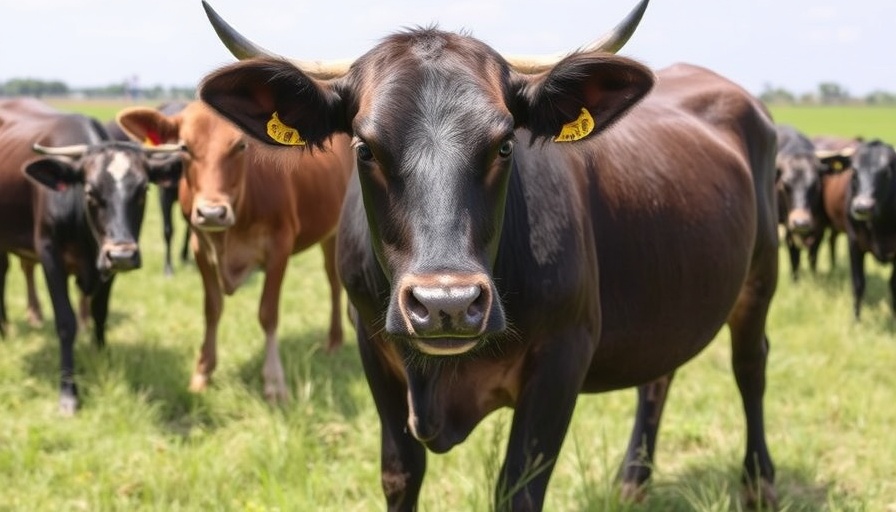
New Threat Looms Over Texas’ Cattle Industry
The Texas cattle industry, a cornerstone of the Lone Star State’s economy, is facing a serious threat from the resurgence of the New World screwworm, a parasite infamous for causing considerable damage to livestock. Its recent sightings just 700 miles from the U.S. precipitated a temporary closure of the border to incoming cattle from Mexico, heightening fears among ranchers across Texas.
Understanding the New World Screwworm
Once successfully eradicated from Texas in the 1960s, the New World screwworm has demonstrated that it could return with devastating effects. This parasitic fly feeds on the living flesh of warm-blooded animals, including cattle, wildlife, and even pets and humans. According to Wayne Cockrell, a board member of the Texas and Southwestern Cattle Raisers Association, the implications of the screwworm’s return are dire. “It kills a lot of cattle, it kills a lot of wildlife,” he stated, underlining both the animal welfare and economic impacts.
The Economic Impact on Texas Ranchers
As beef prices in the U.S. soar to unprecedented levels—ground beef averaging $5.80 a pound—fears of losing livestock to the screwworm escalate. Experts predict that Texas could potentially lose over $11 billion annually if the parasite re-establishes itself in the U.S. This loss stems not only from the deterioration of the cattle population but also from reduced tourism revenue, especially impacting the Texas deer hunting season, a significant attraction.
Mitigating the Threat or Facing Economic Ruin?
The immediate closure of the southern border to cattle imports, while necessary, has consequences. Operations such as those run by local beef companies are experiencing an inventory squeeze, leading to price hikes that affect consumers and businesses alike. Carter Johnson, head of Fort Worth Cattle Company, expresses the gravity of the situation, asserting that losing even a handful of cattle could be financially catastrophic for smaller ranches. “You lose 10 head in a lot of 40, which is absolutely possible with the screwworm, that’s $40,000,” Johnson explained, emphasizing how even a small percentage loss represents a significant financial blow.
Historical Success against Screwworms
The efforts to eradicate the New World screwworm decades ago involved establishing factories to sterilize male flies through radiation. This innovative approach successfully disrupted their breeding cycle, solidifying hope for Texas ranchers that similar strategies could be employed again. As ranchers rally for action, experts suggest that it’s imperative to invest in preventive measures and research development to combat the screwworm’s resurgence efficiently.
Community Response and Preparedness
The challenge posed by the New World screwworm highlights the vital connection between the cattle industry and Texas communities. Local ranchers are not just fighting for their livelihoods; they are working to preserve a way of life integral to Texas culture. Advocacy for strong biosecurity measures must be prioritized, with local governments and agricultural agencies collaborating to safeguard ranchers and consumers. Community awareness is crucial as residents of Dallas Fort Worth must understand how such agricultural threats can ripple through local economies.
As Texas grapples with this evolving threat, it’s clear that awareness and action from the community can help mitigate risks. The Texas cattle industry serves not just local economies, but also national markets, and ensuring its health is paramount. By staying informed about these developments, local residents can play a role in supporting their ranchers and the overall agricultural landscape.
 Add Row
Add Row  Add
Add 




 Add Row
Add Row  Add
Add 

Write A Comment